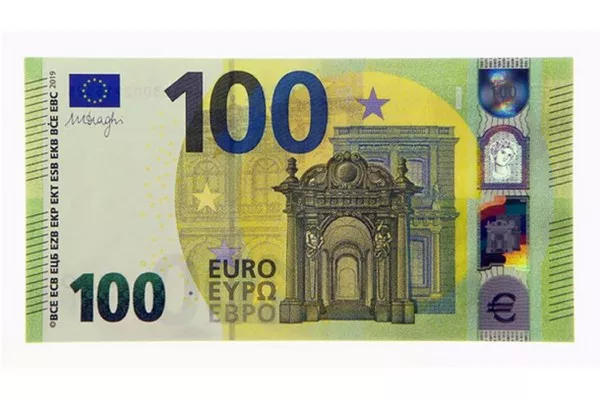In the intricate dance of global economics, few levers wield as much influence as the Central Bank Europe interest rate. As the monetary authority for the Eurozone, the European Central Bank (ECB) holds the reins to this critical parameter, shaping the financial landscape and influencing economic actors across the continent. This article delves into the multifaceted role of the central bank Europe interest rate, exploring its impacts, mechanisms, and the broader implications for the Eurozone.
Historical Perspective
To comprehend the present, it’s essential to navigate the past. The central bank Europe interest rate has a rich historical tapestry dating back to the establishment of the Euro in 1999. Initially, the ECB set its interest rate to fulfill the primary objective of price stability. Over the years, this objective evolved, responding to economic challenges such as inflation, recession, and financial crises. Each shift in the central bank Europe interest rate echoed through the financial markets, sending ripples of influence across diverse sectors.
Monetary Policy Toolbox
At the heart of the central bank Europe interest rate’s impact lies the ECB’s monetary policy toolbox. Through instruments like refinancing operations and open market operations, the central bank adjusts the interest rate to fine-tune the money supply. By influencing the cost of borrowing, the central bank Europe interest rate serves as a pivot for managing inflation, promoting economic growth, and maintaining financial stability.
Inflation Dynamics
Inflation, the perennial economic specter, is a key player in the central bank Europe interest rate saga. The ECB employs its interest rate tools to keep inflation in check, aiming for a target close to but below 2%. A higher interest rate can curb inflation by making borrowing more expensive, dampening spending and investment. Conversely, a lower interest rate can stimulate economic activity by reducing the cost of borrowing, fostering spending and investment.
Economic Growth and Employment
The central bank Europe interest rate plays a pivotal role in fostering economic growth and employment. By adjusting interest rates, the ECB influences the cost of capital, impacting businesses’ investment decisions and consumers’ spending patterns. Lower interest rates can incentivize borrowing and investment, propelling economic growth and, subsequently, job creation. Conversely, higher interest rates can act as a check on excessive borrowing and speculative activities, maintaining financial stability.
Global Trade and Competitiveness
The interconnectedness of the global economy means that the central bank Europe interest rate resonates beyond the Eurozone. Fluctuations in interest rates can influence exchange rates, affecting the competitiveness of Eurozone exports. A lower interest rate may lead to a weaker Euro, boosting exports but potentially raising concerns about currency devaluation. Conversely, a higher interest rate can strengthen the Euro, making exports more expensive but potentially enhancing the Eurozone’s purchasing power.
Financial Markets and Investor Sentiment
Financial markets are particularly attuned to the central bank Europe interest rate decisions. Changes in interest rates can trigger volatility in stock markets, bond markets, and currency markets. Investors closely analyze central bank communications and interest rate decisions, adjusting their portfolios based on the perceived economic outlook. The central bank Europe interest rate thus becomes a barometer of investor sentiment, shaping the risk appetite in financial markets.
Challenges and Controversies
The central bank Europe interest rate is not without its share of challenges and controversies. Striking the right balance between inflation control, economic growth, and financial stability is a delicate task. Additionally, prolonged periods of low or negative interest rates pose challenges for financial institutions, impacting their profitability. Critics argue that such policies can distort market signals, create asset bubbles, and lead to income inequality.
Unconventional Monetary Policies
In response to the 2008 financial crisis and the subsequent Eurozone sovereign debt crisis, the ECB ventured into unconventional monetary policies, expanding its toolkit beyond traditional interest rate adjustments. Quantitative easing (QE) became a prominent feature, involving large-scale asset purchases to inject liquidity into the financial system. These unconventional measures underscore the adaptability of the central bank Europe interest rate framework in addressing unprecedented economic challenges.
Looking Ahead: Future Trajectories
As the Eurozone navigates the complexities of a post-pandemic world, the trajectory of the central bank Europe interest rate remains a subject of intense scrutiny. The delicate balance between supporting economic recovery, managing inflationary pressures, and safeguarding financial stability will shape the ECB’s future decisions. The Eurozone’s resilience and adaptability hinge on the central bank’s ability to navigate these challenges, reaffirming the centrality of the central bank Europe interest rate in the economic narrative.
Conclusion
In the grand tapestry of European economics, the central bank Europe interest rate emerges as a linchpin, orchestrating the delicate balance between stability, growth, and inflation. Its nuanced role extends far beyond the realm of interest rates, permeating through global trade dynamics, financial markets, and the employment landscape. As the Eurozone charts its course in an ever-evolving economic landscape, the central bank Europe interest rate will continue to wield its influence, shaping the contours of prosperity for the nations it serves.
Related Topics:
When Will ECB Raise Interest Rates: A Quick Guide
What is the Current ECB Interest Rate: A Quick Guide
When Will Europe’s Interest Rates Come Down?


